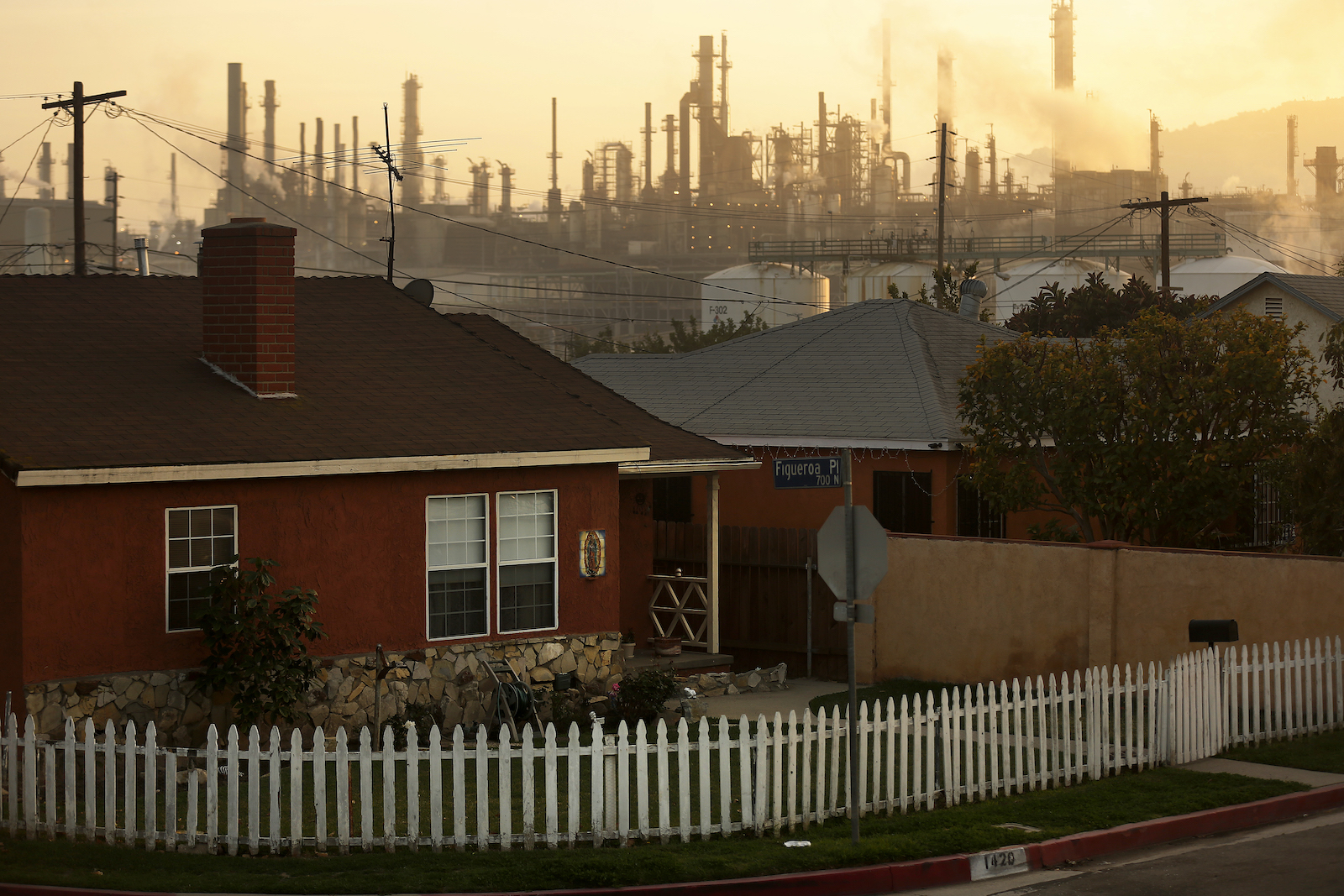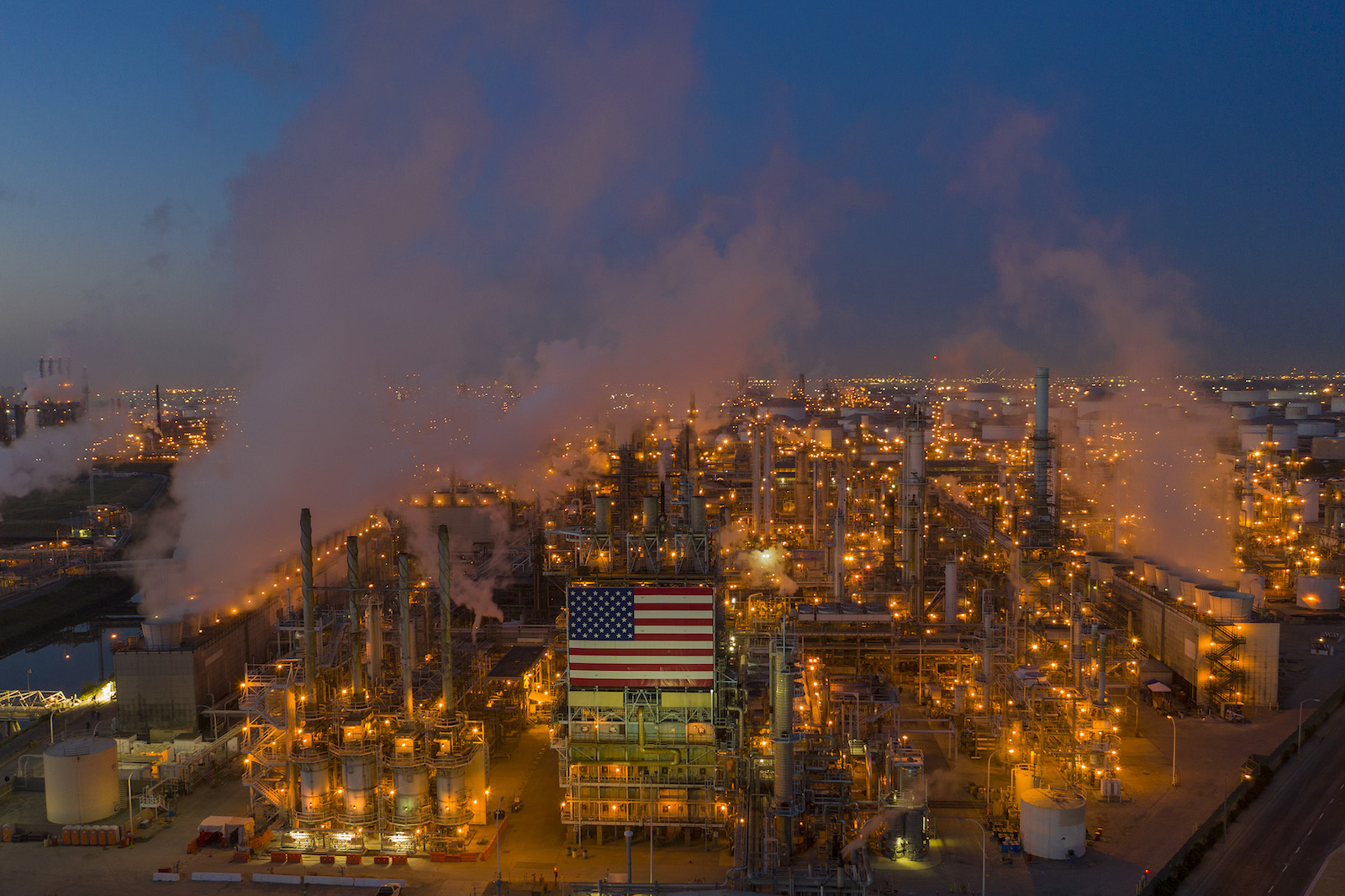Friday night seemed like any other for residents near Long Beach, California — until they heard what my mom later described to me as a “sonic boom.” Suddenly, family photos began crashing to the floor as her entire condo shook violently.
A 4.3-magnitude earthquake had rocked Carson, a southern suburb of Los Angeles, just a few miles away from her home around 8 pm. That magnitude of earthquake is only considered “moderate” on the Modified Mercalli Intensity Scale: It can cause windows to break and fully overturn unstable objects, but it’s unlikely to cause the kind of building collapse that claims lives. However, for the more than 150,000 people within two miles of this particular event’s radius, earthquakes can cause or accelerate life-threatening environmental events, in which fossil fuel refineries emit pollutants at a pace well above their regulated levels.
The boom my mom heard was an explosion at the Los Angeles Marathon Refinery in Carson, caused by the plant losing power during the quake. For at least three hours, sun-like bright orange flames lit up the sky and could be seen as far as 25 miles away in Hollywood. The plant, which is the largest oil refinery on the West Coast and the ninth-largest in America, immediately began releasing hundreds of pounds of gases known to inflame asthma and cause lung disease, including nitrogen dioxide and sulfur dioxide. The massive flames were flares the refinery set to burn off these excess gases. Though the flares died down by midnight, the facility continued releasing the highly reactive gases for more than 24 hours.
Carson — where nearly 40 percent of residents are immigrants and 75 percent are people of color — is a part of a group of cities along the Port of Los Angeles. Those cities constitute the fossil fuel capital of the West Coast, where an estimated 4,100 people die prematurely every year due to air pollution, according to the California Air Resources Board. In less than a five-mile radius, there are five oil refineries and the third-largest system of oil and gas drilling in the country.
When Friday’s flares were first lit, firefighters were called to the scene but turned away by refinery officials, according to the Los Angeles Times. Officials noted that the flares were part of “normal” procedures meant to prevent catastrophes when plants lose power: Flares are meant to burn off combustible gases in a controlled way, so that they don’t collect inside a plant at dangerous levels. They’re also meant to mitigate the pollution of directly releasing said gases into the atmosphere.
However, flaring and releasing those gases into the surrounding air contributes to global warming and exposes nearby residents to elevated levels of pollutants that irritate the eyes, nose, throat and lungs and have been linked to birth defects.
Jan Victor Andasan, a Carson resident and local organizer with the environmental group East Yard Communities for Environmental Justice, pointed out the irony that a facility’s safety procedures could increase the risks to surrounding communities: “How is it that the only option to prevent a disaster is to do something else that harms people?”
Within 30 minutes of Friday night’s tremors, messages about the refinery flooded the internet and “#earthquake” became the top trending topic on Twitter in the U.S. Residents, including Andasan, rushed online to tell their neighbors to shut their windows to keep out the gases, while others decried the “environmental racism” of having oil refineries so close to residential neighborhoods.

In the meantime, there was no reprieve for concerned residents who questioned what was being dumped into the air. For at least 15 hours after the earthquake, nine out of the facility’s 12 emissions monitors read as “invalid,” “questionable,” or “missing,” according to the refinery’s online database. A spokesperson for the refinery, Jamal Kheiry, told Grist that the power outage caused the monitors to go “temporarily offline.”
By Sunday evening, the plant’s monitors were fully operational again. According to Kheiry, throughout the entire ordeal the refinery was filing notifications of their flares with the South Coast Air Quality Management District, or SCAQMD, and the California Governor’s Office of Emergency Services. Bradley Whitaker, a spokesperson for SCAQMD, the board charged with regulating air pollution in the region, confirmed to Grist that the department had been alerted and that inspectors were dispatched to the refinery to monitor the flare.
According to a tweet from SCAQMD, inspectors noted elevated levels of hydrogen sulfide — a gas which can cause intense irritation to the lungs — in the air, though community-level air monitors maintained by SCAQMD showed “no elevated levels of toxic compounds.” However, the locations of those two air quality monitors, which are located 1 and 2 miles away from the refinery, may not have fully captured the air quality of the tens of thousands of residents who live closer to the refinery than the monitors.
According to the refinery’s last notice given to the California Governor’s Office of Emergency Services on Saturday morning, more than 1,000 pounds of nitrogen dioxide and 500 pounds of sulfur dioxide had been released. The amounts far exceeded the levels approved by the air quality board during flaring events. Additional toxins may have also been released into the Dominguez Channel, a 15-mile watershed that feeds into the Pacific Ocean, as well as a residential lake in Wilmington, California, according to the report. There is no timetable for when the exact amount of pollutants released will be determined, but the refinery is “working to calculate the emissions” and verifying them with “adequate quality assurance protocols,” according to Kheiry.
The Marathon Refinery wasn’t alone in its excess emissions following the quake. Less than five miles away, the Phillips 66 refinery in Wilmington was also experiencing a continuous flare. As of 8 hours after the earthquake, the refinery had reported releasing more than 500 pounds of sulfur dioxide.
The earthquake, while relatively small in size, underscored the risk residents face in a region defined by both natural disasters and the fossil fuel industry. Between 2008 and 2017, Southern California experienced 1.81 million earthquakes — one quake every three minutes. While the majority of these went unfelt by humans, their prevalence remains cause for concern for residents around the Port of Los Angeles, if they continue to lead to greater pollution from nearby refineries that already have a track record of vastly underreporting emissions released during flares.
For community members like Andasan, moving beyond fossil fuels in the area is seen as the safest option. “These facilities are so volatile that something ‘normal’ could trigger something dangerous for all the people that live near them,” they said. “Wilmington and Carson are proof that the prevalence of fossil fuel industries cannot continue without harming and killing people as natural disasters become more common.”




